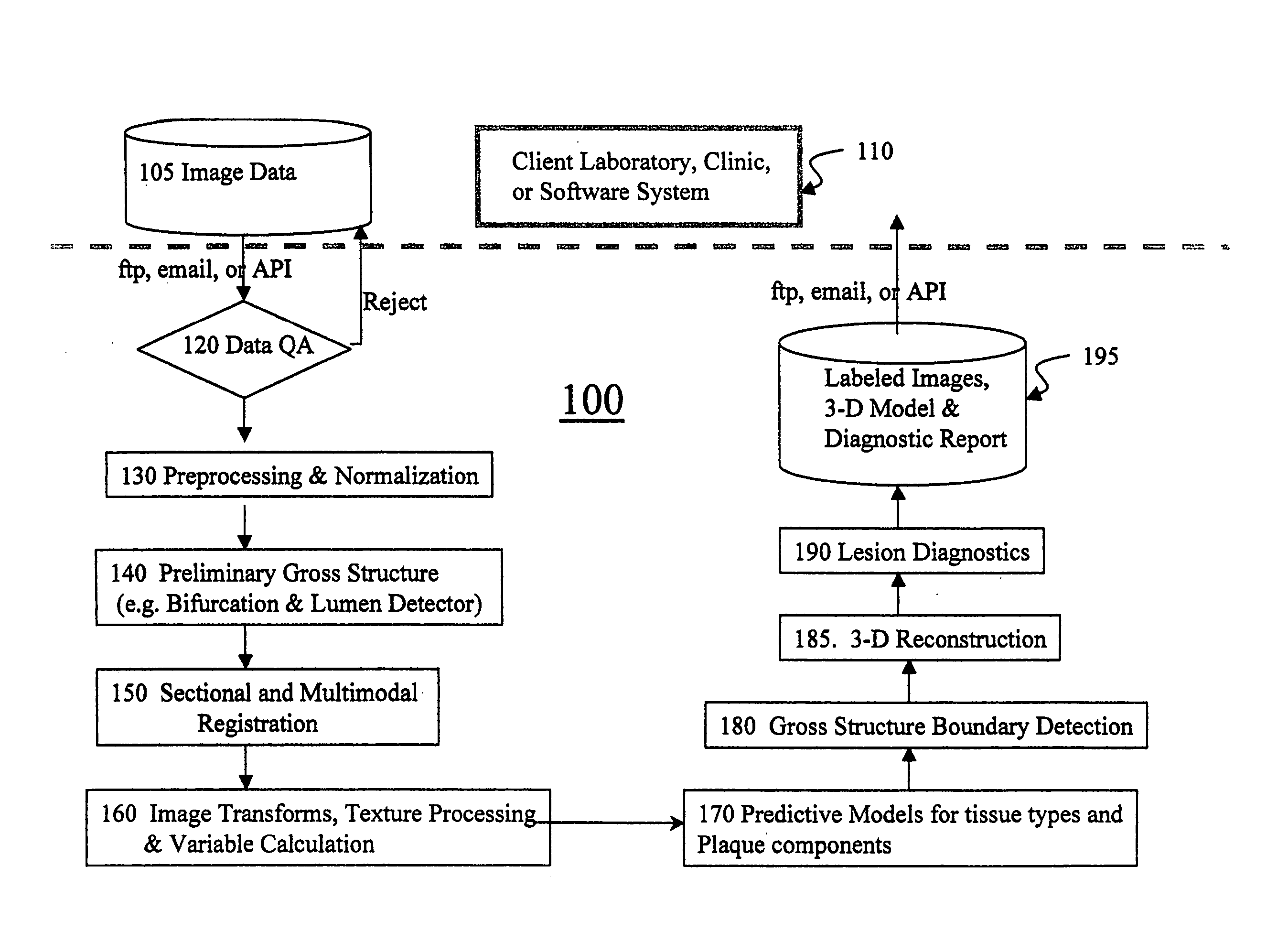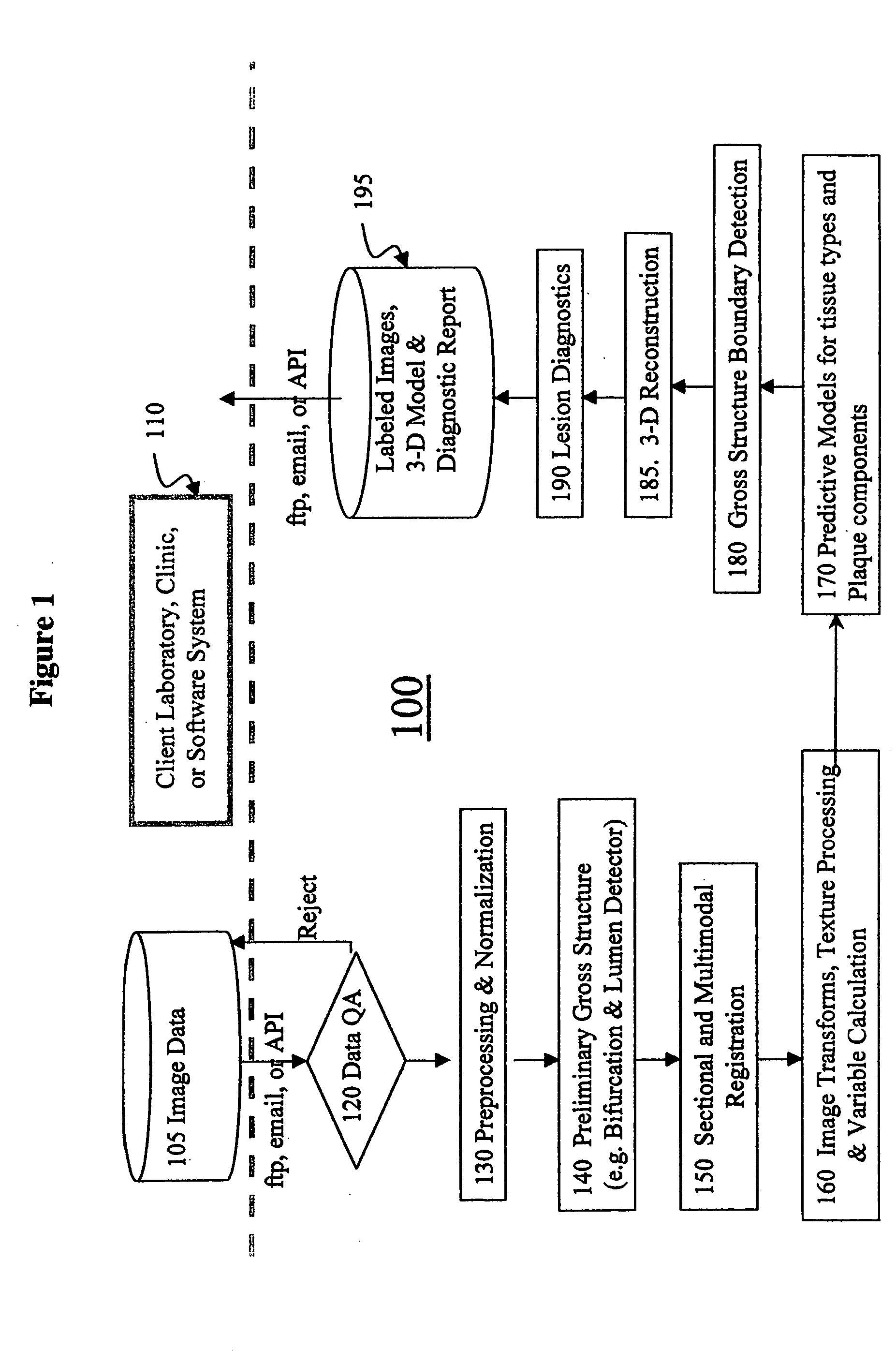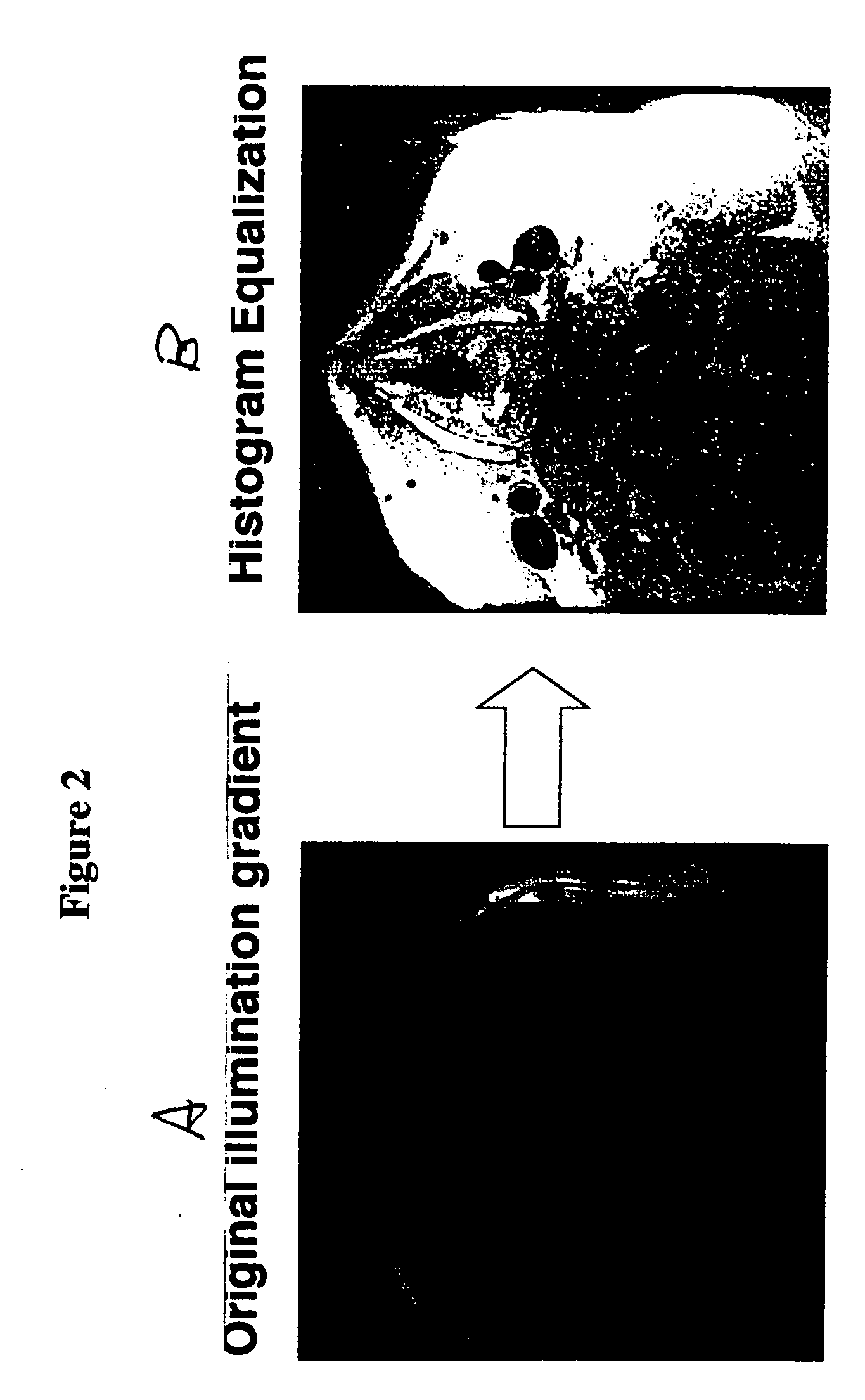Automated methods and systems for vascular plaque detection and analysis
a technology of automatic methods and systems, applied in the field of medical imaging data automatic analysis, can solve the problems of inability to perform screening or serial examination, inaccessible to invasive instruments, and large amount of patient's vasculature, etc., and achieve the effect of reducing the burden of plaque in patients over tim
- Summary
- Abstract
- Description
- Claims
- Application Information
AI Technical Summary
Benefits of technology
Problems solved by technology
Method used
Image
Examples
example 1
This example describes several particularly preferred techniques for processing image data in the context of this invention, including noise reduction, dimension reduction, and texture processing.
A. Noise Reduction.
Composite multi-contrast images were processed in order to reduce noise and introduce smoothing. In each case, the image was first median-filtered to remove noise with impulse characteristics, then smoothed with an adaptive Wiener filter that adjusts to statistics in the surrounding ‘N’ pixel neighborhood. The mean and variance are estimated from the intensities ‘a’ at pixel locations n1, n2:
μ=(1 / N2)Σa(n1,n2);σ2=(1 / N2)Σa2(n1, n2)−μ2
These estimates are then used to assign the parameter ‘b’ to a Wiener filteri: b(n1,n2)=μ+(σ2+v2)σ2(a(n1+n2)-μ2)
A 2-dimensional convolution was performed on each image intensity plane with the coefficients b above.
B. Dimension Reduction.
Because of the number of data points and variables to be processed, in orde...
example 2
Predictive Model Development
A “model” is a mathematical or statistical representation of data or a system, used to explain or predict behaviors under novel conditions. Models can be mechanistic (commonly employed in the physical sciences and engineering) or empirical / statistical (wherein the model predictions do not purport to explain the underlying causal relationships). Two relevant applications of statistical modeling are to develop statistical classifiers and predictive models. Statistical classifiers are designed to discriminate classes of objects based on a set of observations. Predictive models attempt to predict an outcome or forecast a future value from a current observation or series of observations. This invention employs both types of models: statistical classifiers are used to classify tissue and plaque components; and predictive models are used to predict risks associated with, for example, cardiovascular disease (CVD).
The process of model development depends on th...
example 3
Plaque Classification
This example describes a preferred embodiment of the invention for detecting and classifying plaque using statistical classifiers. Initially, effort was directed to building a system using a set of models for detecting three key components of atherosclerotic plaque in MR (magnetic resonance) images of ex vivo blood vessels. The system also detected arterial muscle tissue that, when combined with the plaque and lipid detection systems, allowed the full artery to be identified in the image and plaque burden estimates to be computed. This system is fully automated, and in this example, the only human intervention in the detection and analysis process came during the collection of the raw magnetic resonance data from the MRI instrument. Using this system, a success rate equal or superior to the performance of a human expert radiologist was achieved in plaque component classification.
In this example, predictive models were trained to identify three tissue types: ...
PUM
| Property | Measurement | Unit |
|---|---|---|
| Composition | aaaaa | aaaaa |
| Volume | aaaaa | aaaaa |
| Magnetic resonance | aaaaa | aaaaa |
Abstract
Description
Claims
Application Information
 Login to View More
Login to View More - R&D
- Intellectual Property
- Life Sciences
- Materials
- Tech Scout
- Unparalleled Data Quality
- Higher Quality Content
- 60% Fewer Hallucinations
Browse by: Latest US Patents, China's latest patents, Technical Efficacy Thesaurus, Application Domain, Technology Topic, Popular Technical Reports.
© 2025 PatSnap. All rights reserved.Legal|Privacy policy|Modern Slavery Act Transparency Statement|Sitemap|About US| Contact US: help@patsnap.com



